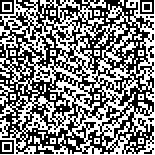苏泽林,肖志航,张乐驰,等.经脊髓间歇性Theta爆发式磁刺激对急性脊髓损伤小鼠脊髓组织铁死亡进程及后肢运动功能的影响[J].中华物理医学与康复杂志,2025,47(10):882-888
扫码阅读全文

|
| 经脊髓间歇性Theta爆发式磁刺激对急性脊髓损伤小鼠脊髓组织铁死亡进程及后肢运动功能的影响 |
|
| |
| DOI:10.3760/cma.j.cn421666-20250102-00005 |
| 中文关键词: 脊髓损伤 经脊髓间歇性Theta爆发式磁刺激 铁死亡 铁稳态 |
| 英文关键词: Spinal cord injury Theta burst stimulation Ferroptosis Iron homeostasis |
| 基金项目:国家重点研发计划项目(2022YFC2009706);国家自然科学基金项目(82272594);江苏省自然科学基金项目(BK20211088) |
|
| 摘要点击次数: 464 |
| 全文下载次数: 335 |
| 中文摘要: |
| 目的 观察经脊髓间歇性Theta爆发式磁刺激(iTBS)对急性脊髓损伤小鼠脊髓组织铁死亡进程及后肢运动功能的影响。 方法 采用随机数字表法将30只C57BL/6J小鼠分为对照组、模型组、iTBS组,每组10只。手术切除模型组、iTBS组小鼠脊髓T9/T10椎板,使用打击器敲击暴露脊髓,建立脊髓损伤模型。对照组小鼠仅切除T9/T10椎板,不进行脊髓损伤处理。造模后24 h,对iTBS组小鼠给予经脊髓iTBS干预,每日2次,直至造模第28天。造模28 d后,采用普鲁士蓝染色法观察3组小鼠脊髓组织中的铁沉积情况,并利用试剂盒检测小鼠脊髓组织中的铁离子、谷胱甘肽(GSH)及丙二醛(MDA)含量;利用免疫荧光法检测小鼠谷胱甘肽过氧化物酶4(GPX4)、酰基辅酶a合成酶长链家族成员4(ACSL4)的表达水平;使用Western blot法对GPX4、ACSL4进行定量分析;造模后1 d、3 d、7 d、14 d、28 d,采用Basso小鼠量表(BMS)评分对3组小鼠的后肢运动功能进行评定。 结果 模型组小鼠脊髓组织中的铁含量增加,呈现出明显的铁沉积现象,而iTBS组小鼠脊髓组织中的铁含量下降,铁沉积情况也较模型组明显减轻(P<0.05)。与模型组比较,iTBS组小鼠脊髓组织的GSH含量上升、MDA含量下降(P<0.05)。模型组小鼠脊髓组织GPX4的表达水平较对照组降低,ACSL4表达水平较对照组增加(P<0.05);iTBS组小鼠脊髓组织GPX4的表达水平较模型组增加、ACSL4的表达水平较模型组下降(P<0.05)。Western blot结果显示,iTBS组GPX4蛋白表达水平较模型组明显增加(P<0.05),ACSL4蛋白表达水平较模型组明显降低(P<0.05)。iTBS组小鼠造模后7 d、14 d、28 d的BMS评分显著高于模型组(P<0.05)。 结论 经脊髓iTBS能显著抑制急性脊髓损伤小鼠脊髓组织的铁死亡进程,提高后肢运动功能,其作用机制可能与恢复铁稳态、增强抗氧化能力、抑制脂质过氧化有关。 |
| 英文摘要: |
| Objective To explore how trans-spinal intermittent theta burst stimulation (iTBS) might inhibit ferroptosis using a mouse model of acute spinal cord injury (SCI). Methods Thirty C57BL/6J mice were randomly assigned to control, model, and iTBS groups, each of 10. SCI was induced at the T9/T10 vertebral level by laminectomy and contusion injury using an impactor. The control group underwent laminectomy only. On the 1st day post-injury (dpi), mice in the iTBS group began receiving intermittent theta burst stimulation of the spine daily. The resting motor threshold (RMT) was determined as 25% of the magnetic stimulator′s maximum output intensity, and the stimulation intensity was set at 80% of the average RMT. The treatment was administered twice daily, with each session consisting of 10 bursts at 50Hz, repeated 40 times at 5Hz intervals (3 pulses per burst). The treatment continued until 28dpi. Immunofluorescence was used to assess the expression of glutathione peroxidase 4 (GPX4) and acyl-CoA synthetase long-chain family member 4 (ACSL4). Western blotting quantified the levels of GPX4 and ACSL4 protein. Iron deposition in the spinal cord tissue was evaluated using Prussian blue staining. Iron concentration, glutathione (GSH), and malondialdehyde (MDA) levels in the spinal cord tissue were measured using commercial assay kits, while locomotor functioning was assessed using the Basso Mouse Scale (BMS) on 1st, 3rd, 7th, 14th and 28thdpi. Results The model group exhibited significantly increased iron levels and prominent iron deposition in the spinal cord compared to the control group, while significantly reduced iron levels and iron deposition were observed in the iTBS group. The immunofluorescence and western blotting revealed that GPX4 expression was downregulated and ACSL4 expression was upregulated in the SCI model group compared to the control group. iTBS treatment significantly upregulated GPX4 and downregulated ACSL4 expression. In addition, the iTBS group showed significantly lower MDA levels and significantly higher GSH levels in their spinal cord tissue compared to the SCI model group. Locomotion, assessed in terms of BMS scores, was significantly improved in the iTBS group compared to the SCI model group on 7th, 14th, and 28thdpi. Conclusions These findings suggest that iTBS delivered via the spinal cord effectively inhibits ferroptosis and improves locomotion after a SCI, potentially by restoring iron homeostasis, enhancing antioxidant capacity, and suppressing lipid peroxidation. |
|
查看全文
查看/发表评论 下载PDF阅读器 |
| 关闭 |
|
|
|